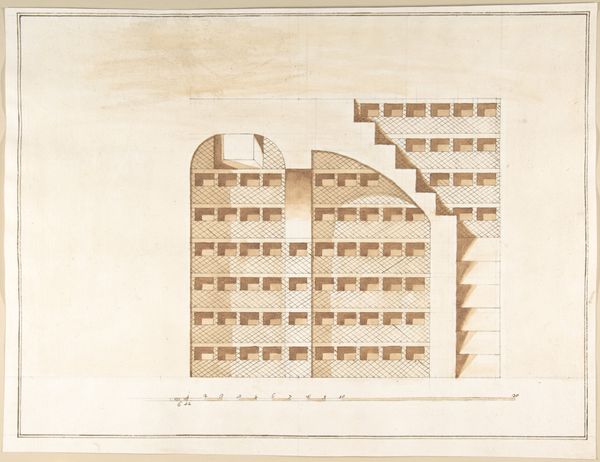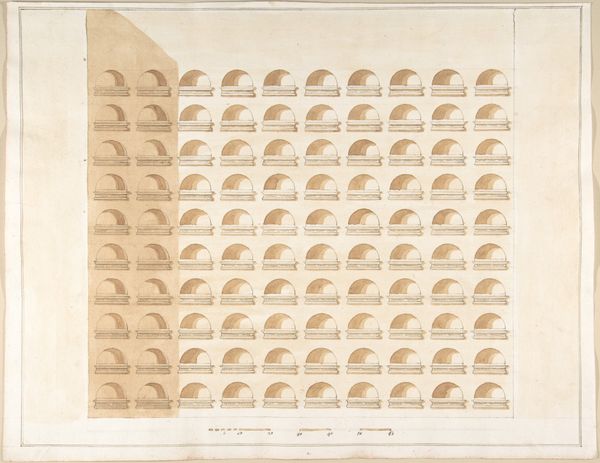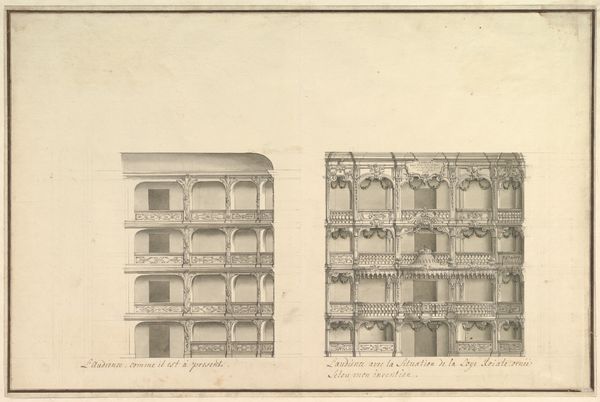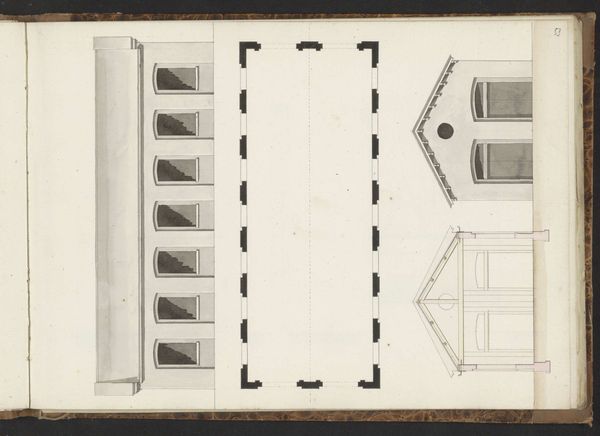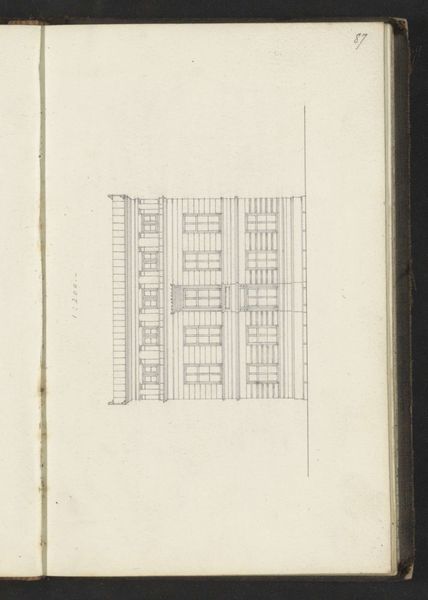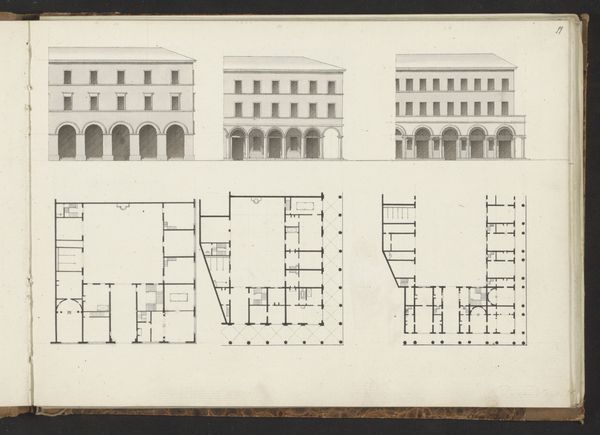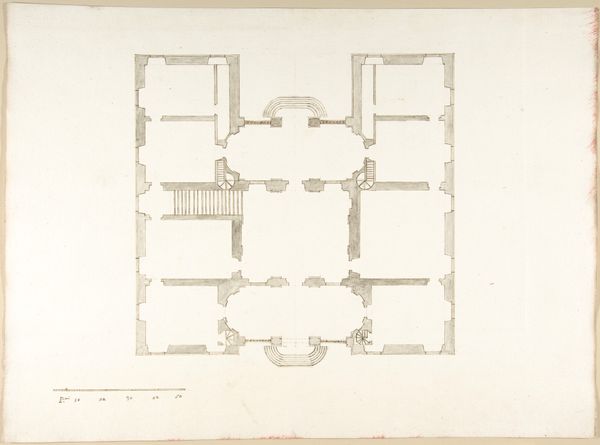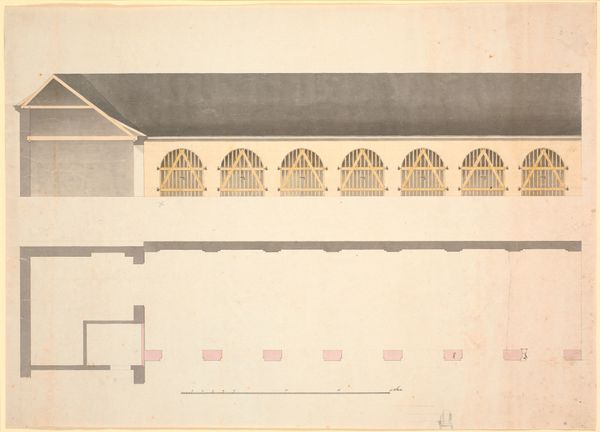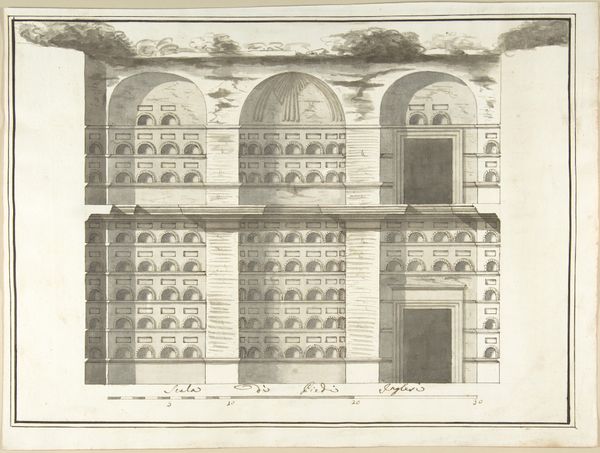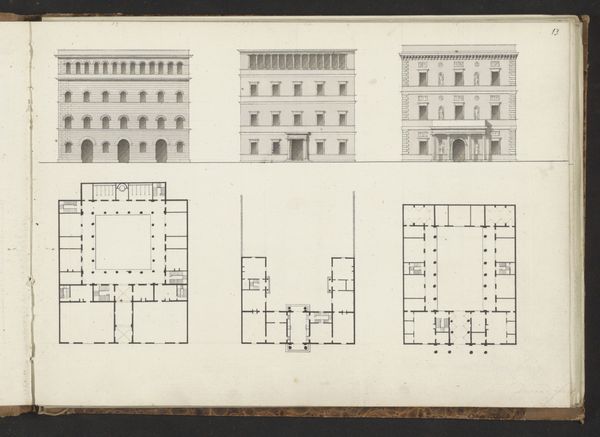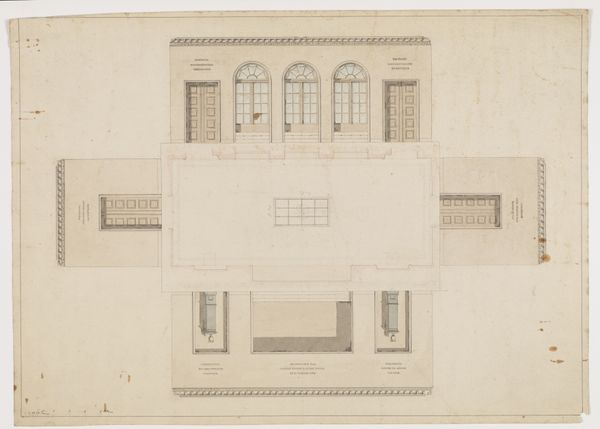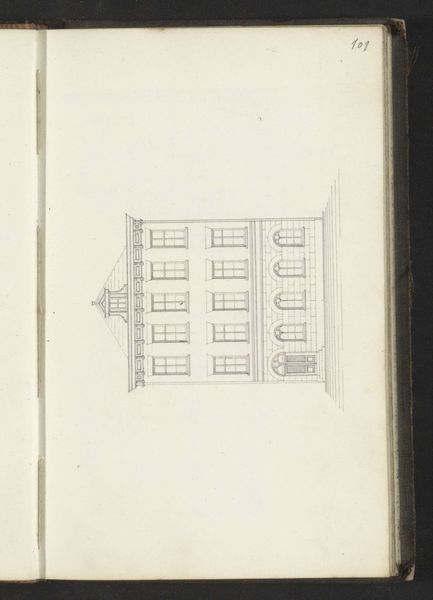
drawing, print, paper, watercolor, architecture
#
drawing
# print
#
landscape
#
paper
#
watercolor
#
history-painting
#
academic-art
#
architecture
Dimensions: 12-13/16 x 15-13/16 in. (32.6 x 40.2 cm)
Copyright: Public Domain
Curator: We’re looking at “Section of a Columbarium,” a watercolor drawing from between 1710 and 1727 by Pietro Paolo Coccetti, currently held at The Metropolitan Museum of Art. Editor: There’s something immediately haunting about this drawing. It’s stark, with repeating geometric patterns, like an early architectural rendering but with a certain…chill. Curator: Indeed. Notice how Coccetti’s masterful application of watercolor creates an almost palpable sense of depth and texture. The rigorous, almost mathematical, structure invites a careful decoding. The grid, repeated rectangular voids... it suggests a framework for… well, absence. Editor: Precisely! The columbarium, historically, represents communal entombment, a landscape of memory. Each niche, with its standardized shape and placement, signifies a life reduced to a unit within a larger societal structure. It hints at both the individual and collective confrontation with mortality. Curator: The repetitive use of rectangular forms provides an almost structuralist take on architectural rendering. Observe how the variations in the washes – darker in the recesses, lighter on the surface – produce not only dimensionality, but a visual rhythm that articulates negative space. Editor: The rhythm is critical. It is a visual manifestation of time’s relentless march, as generations occupy and then vacate their allotted space in the grand narrative of history. In the drawing, you almost see the psychological weight—the weight of shared grief. Curator: It's hard to miss that interplay of light and shadow in service to architectural legibility. How Coccetti uses tonality, more than line itself, to convey dimension and volume is striking. It exemplifies Academic art in its meticulous attention to structural logic. Editor: Consider the cultural symbolism ingrained here, reflecting our own deeply coded methods of preserving memory. Columbariums speak volumes about humanity’s effort to create physical, visual testaments against inevitable loss. It begs us to contemplate both continuity and dissolution. Curator: A most insightful view. It reveals how aesthetic language itself contains philosophical reflections, while, I concede, its very regularity generates emotional impact through purely visual terms. Editor: Absolutely. Together, the piece creates a space of profound contemplation, doesn’t it? It offers viewers an encounter, both stark and poignant, with the architectures of commemoration itself.
Comments
No comments
Be the first to comment and join the conversation on the ultimate creative platform.
